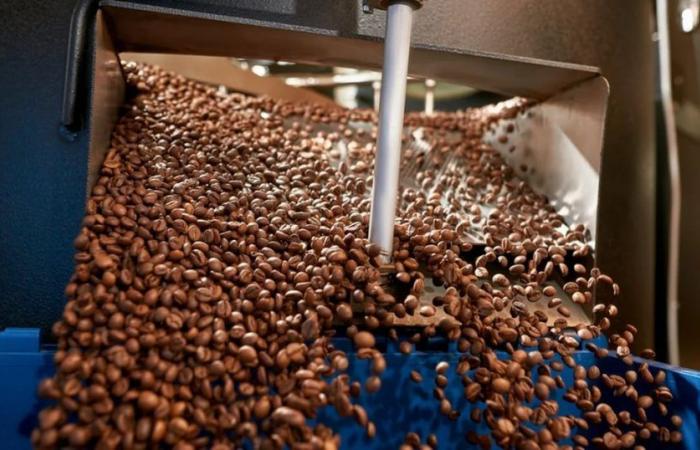The income accumulated by the coffee exports of The Savior fell 35.2% during the 2023-2024 harvest, according to government figures Salvadoran Coffee Institute (ISC) disclosed.
Official data indicate that the export income of grain between October 2023 and April 2024 added more than $46.85 million, compared to 72.34 million for the same period of the 2022-2023 harvest. The downward difference is more than $25.49 millionwhich is equivalent to 35.2% reduction in income from these exports.
For its part, the accumulated in the volume exports during this period also decreased by 31.4%going from 323,081 quintals of gold-grape in the last cycle to 221,671 currently, which means a drop of 101,401 quintals.
Furthermore, in the current harvest, some 44,420 jobs in the coffee sector, compared to 43,930 in the previous cycle.
Salvadoran coffee farming was affected by the rust fungus and the climate crisiswhich led her to register, since the 2013-2014 cycle, her historical production lows of the grain.
In the current cycle, the harvest stood at 888,426 quintals of gold-grape, a 1.12% more than what was collected in the same period in the 2022-2023 harvest, which was 878,560 quintals, far from the more than 4.3 million quintals that the country harvested in the 1992-1993 period.
He coffee is he main agricultural export product from this Central American country, recognized for its specialty varieties harvested in six coffee-growing areas.
This grain was the main engine of the Salvadoran economy in the 1920s and 1930s, accounting for a staggering 90% of exports, everything changed at the end of the 20th century.
He internal armed conflict (1980-1992) affected coffee production throughout the country and between 1979 and 1986, in a period of only seven years, coffee production fell by 19%.
The world coffee prices fell he 3.9% in May compared to April, despite the market’s doubts about the production situation, said the World Coffee Organization (OIC). His composite price index averaged in the 208.38 US cents per pound produced, equivalent to about 453 grams.
The decrease in prices is related to the arrival of rains in Vietnamthe second largest producer in the world, which alleviated fear of a more intense drought, which would have caused “irreversible damage” to the crop.
Furthermore, the favorable conditionsincluding limited rainfall and dry weather, allowed for smooth harvesting and drying in Brazil (the largest producer), although the dollar is strengthening against the Brazilian real.
However, there is uncertainty about the availability of the 2024-2025 crop, not only in the two main producing countries, but also in Central America due to the dry environment and above average temperatures.
The Colombian mild coffee price fell in May 3.4%, standing at 233.5 cents (214.8 cents), and that of other soft goods contracted 3.2%, at 232.11 cents (213.61 cents).
He natural coffee from Brazil fell 4.1%, to 209.78 cents (193.06 cents), according to the ICO, which recorded greater volatility in coffee futures on the London and New York stock exchanges.
In April, the world exports of green coffee beans They totaled 10.77 million 60 kilo bags, which represents an increase of 15.3% in the annual rate.
The organization noted that the Brazilian natural coffee sales They increased by 44.9%, to 3.83 million bags, and the robusta type grew by 13.4%, with a total of 4.08 million bags.
The Colombian soft coffee exports They rose 5.4% to 0.86 million bags, and those of other soft goods decreased 9.1%, to 2.07 million.
By region, the South American exports increased by 44.5% (5.15 million bags), those in Asia and Oceania decreased by 0.3% (3.78 million), those in Africa increased by 39.4% (1.37 million) and those from Mexico and Central America fell 12.6% (1.66 million).






